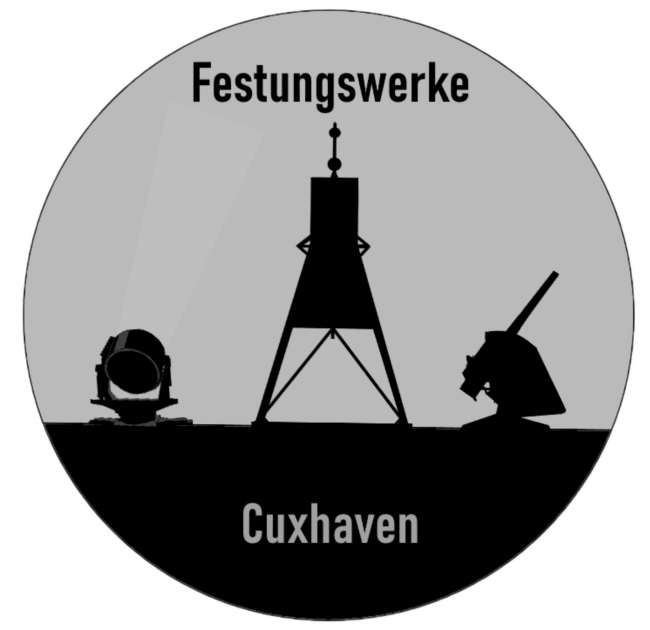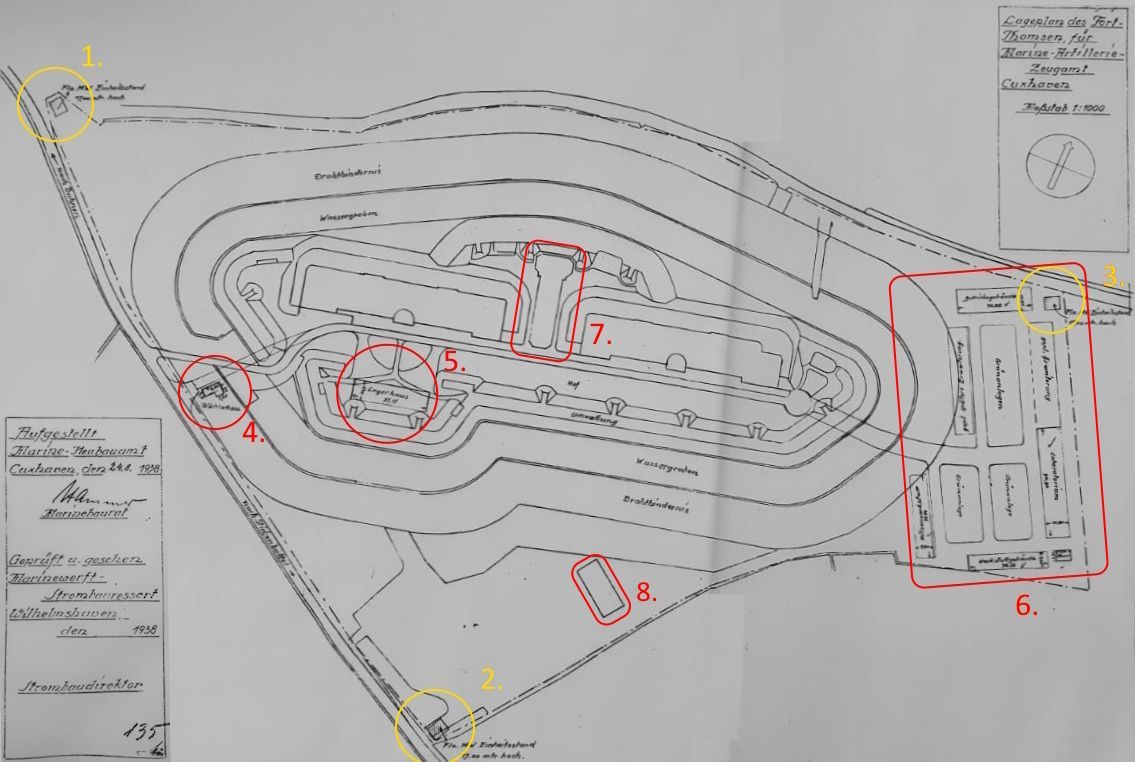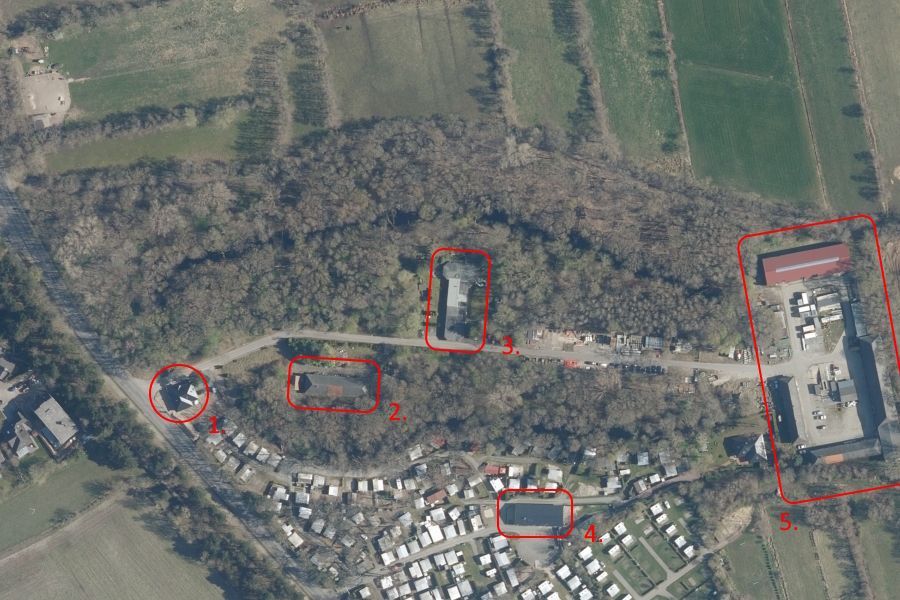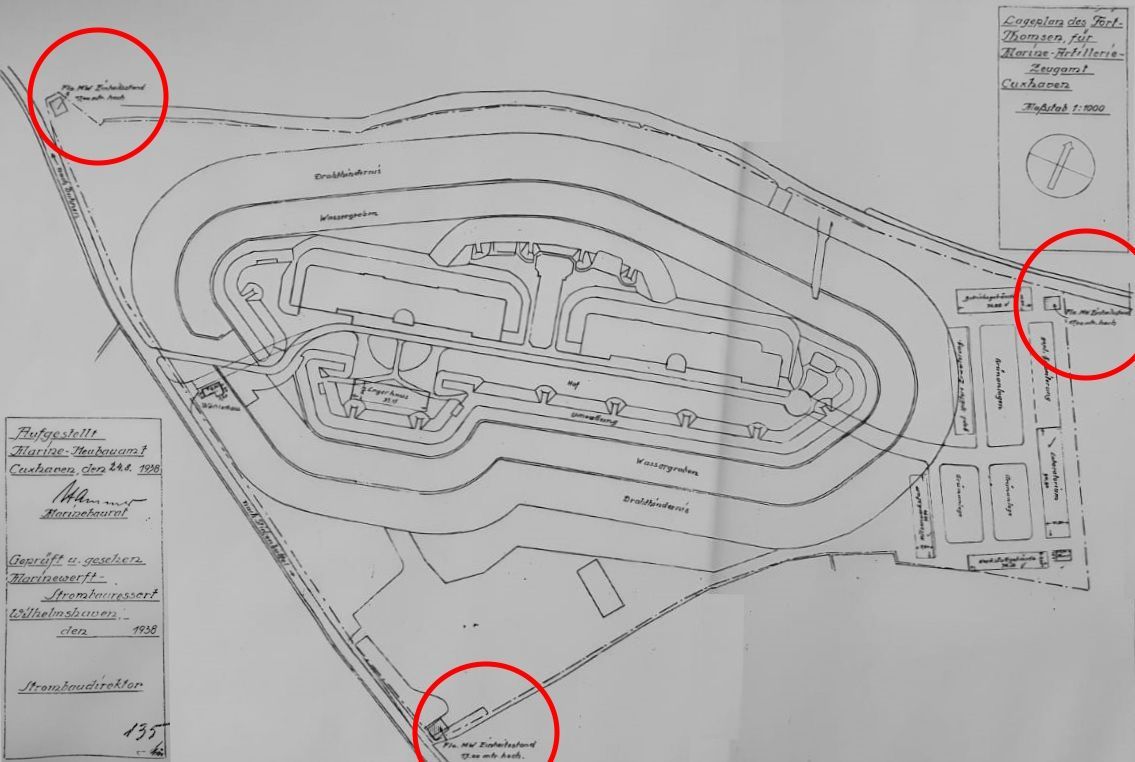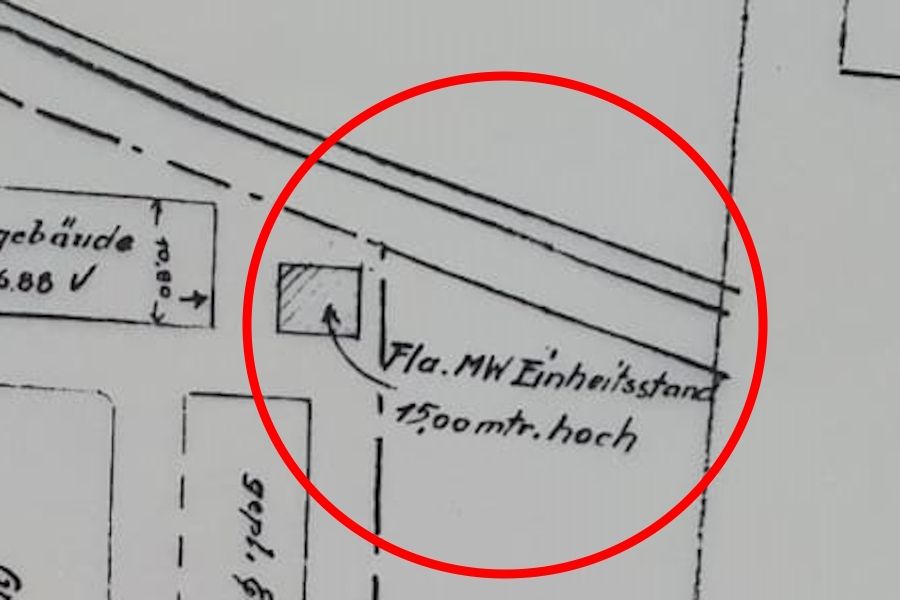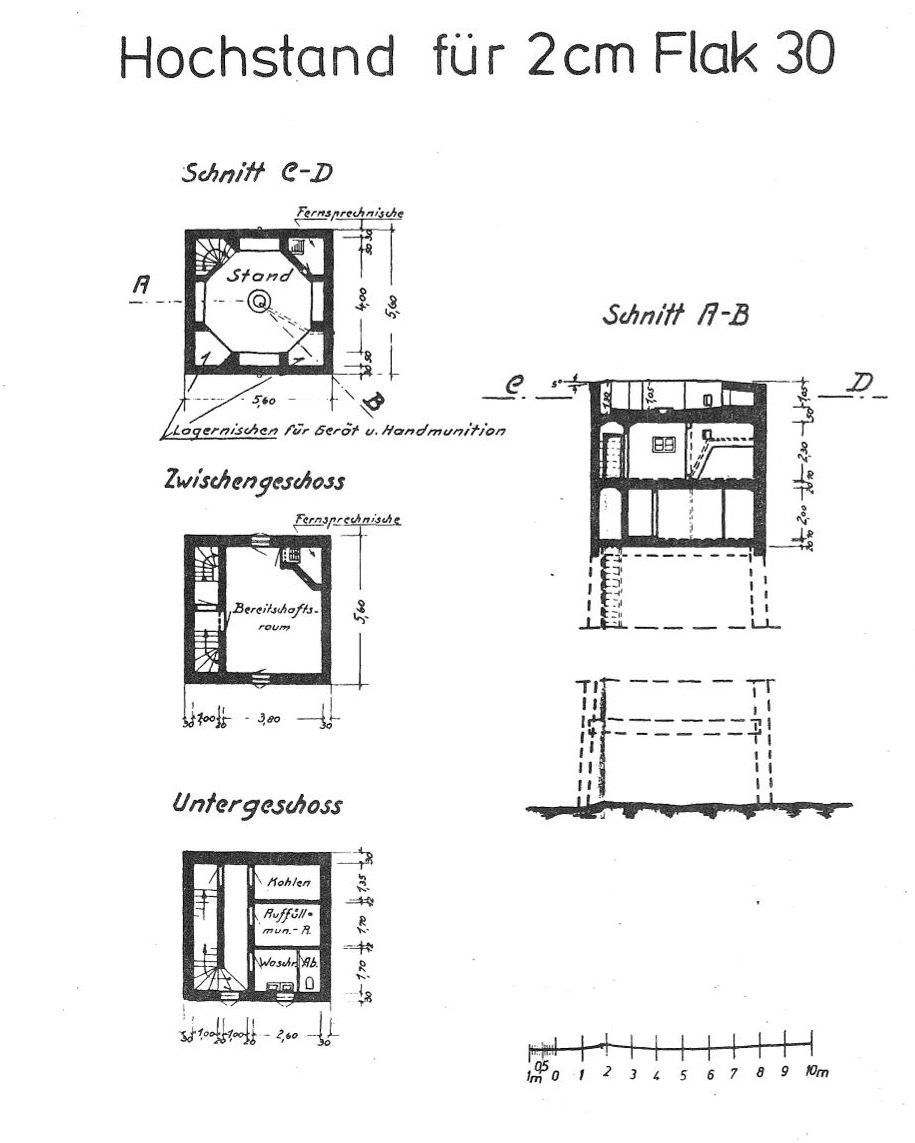
In the German Reich, the term munitions plant was used to describe army or Wehrmacht-owned facilities that were primarily used for the preparation (processing) and storage of munitions. The munitions plants were primarily used to manufacture usable munitions from live and non-live munitions parts, as well as to repair, load and ship them. For the work that was required, munitions plants had workhouses for preparing and dismantling the munitions. Packing sheds were used to store empty munitions boxes. Ammunition and munitions parts were stored in munitions houses. Until 1943, the names Marine-Artilleriezeugamt and Marine-Sperrzeugamt were used for the MUNA of the Kriegsmarine, and later Marine-Artilleriearsenal and Sperrwaffenarsenal.
The "Fort Thomsen" ammunition depot was planned in 1938 and built between 1939 and 1941 between the two districts of Duhnen and Stickenbüttel. It was under the control of the Navy and was subordinate to the Cuxhaven Naval Artillery Department. It was built on the eastern part of the site, the former 28 cm mortar battery of the same name. The entire complex consisted of the laboratory, the shell workshop, several sheds, the workshop building, the smoke shed, the residential barracks, the transformer building, social facilities and the guardhouse. To protect the facility against low-flying aircraft, there were three light anti-aircraft guns on appropriate concrete stands. The entire area was surrounded by a massive barbed wire fence. According to the assessment, only cleaning and repair of ammunition took place at the facility, and this primarily involved light calibers. This work was mainly carried out by conscripted women from the surrounding area of Cuxhaven. A factory for the production of ammunition at this location has not yet been proven and apparently did not exist. Therefore, the often used term "Fort Thomsen ammunition factory" is not accurate. Furthermore, unexploded bombs from the Cuxhaven section that had been defused during the war were collected and stored here. Nothing is known about their whereabouts or what ultimately happened to them. Although the Allies knew about the location in Fort Thomsen through reconnaissance, there was not a single air raid on the ammunition factory. After the war and the demilitarization of the facility, a button and clothing factory moved into the remaining buildings of the former MUNA. Today, the construction yard (spa administration) of Nordseeheilbad GmbH is based here and continues to use the parts of the building that still exist. The eastern and southern parts of the site were sold by BIMA in 2020 and are now owned by the city of Cuxhaven. Source: Wikipedia, MB, Gerd Wildfang
Picture left:
1. - 3. Anti-aircraft towers for light anti-aircraft guns 2 cm4. Guard's house
5. Warehouse
6. MUNA Komplex
7. Wohnbaracke
8. Nebelschuppen
Die Anlage befand sich auf dem Gelände der ehemaligen 28 cm Mörserbatterie. Die Befestigungsanlagen aus Beton waren seinerzeit noch vorhanden und wurde stellenweise genutzt, eine schwere Bewaffnung gab es allerdings nicht mehr. Der gesamte Komplex der ehemaligen Mörserbatterie wurde nach dem Krieg gesprengt und komplett entsorgt. Nur die Gebäude der ehemaligen MUNA blieben bestehen.
Picture left:
1. Das ehemalige Wärterhaus wurde durch einen Neubau ersetzt.
2. The warehouse, it has since been demolished.
3. Die ehemalige Wohnbaracke wird weiterhin als Wohnungen vermietet.
4. Der ehemalige Nebelschuppen ist heutzutage Gebäude eines Campingplatzes.
5. Der heutige Bauhof der Nordseeheilbad GmbH Cuxhaven.
The basic structure of the former fort is still clearly visible today. The old earthen ramparts with the fortification ditches are still under the trees. This area has been a nature reserve since the early 1950s. The reason for this was certainly not nature conservation, but to prevent people from wandering through the area or, even worse, digging in the ground. Despite several surveys after the end of the war, the area is not considered to be free of ammunition. It must still be assumed that there are still disposed explosive devices in the ground and, above all, in the fort ditches.
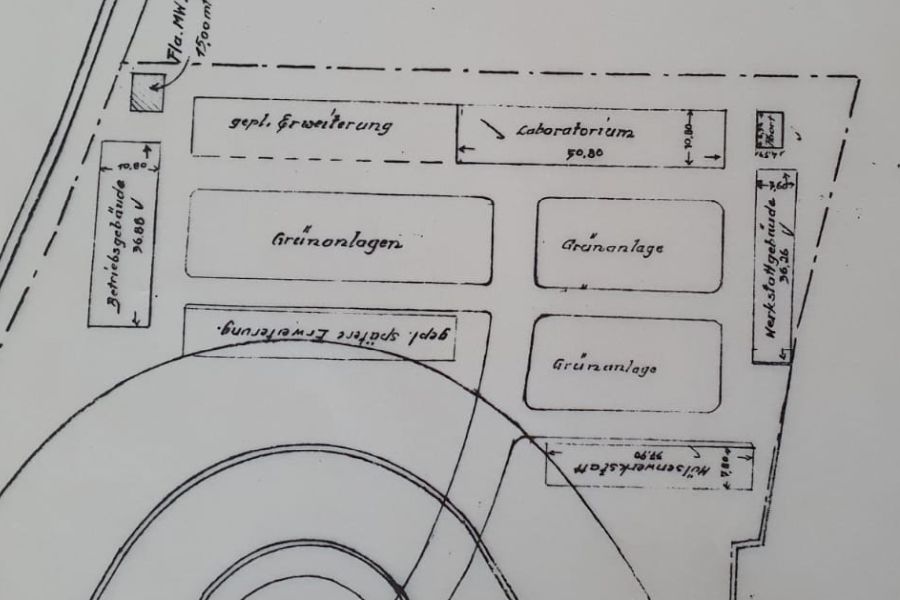
The complex of the ammunition depot in the plan of the Marine New Construction Office from 1938Source: FO
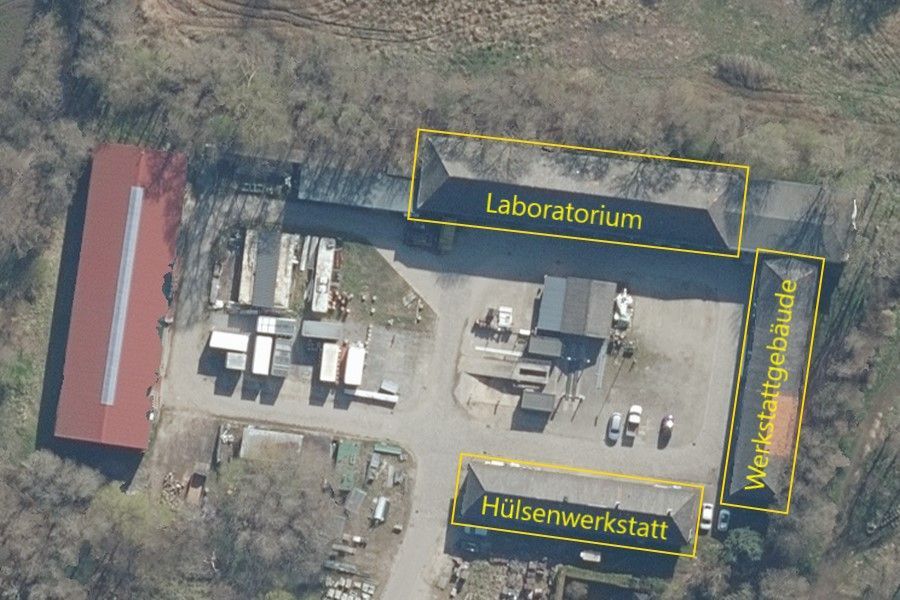
Today, the Nordseeheilbad Cuxhaven GmbH construction yard uses the site. The three original buildings that remain can be seen; the hall on the left is a new building.
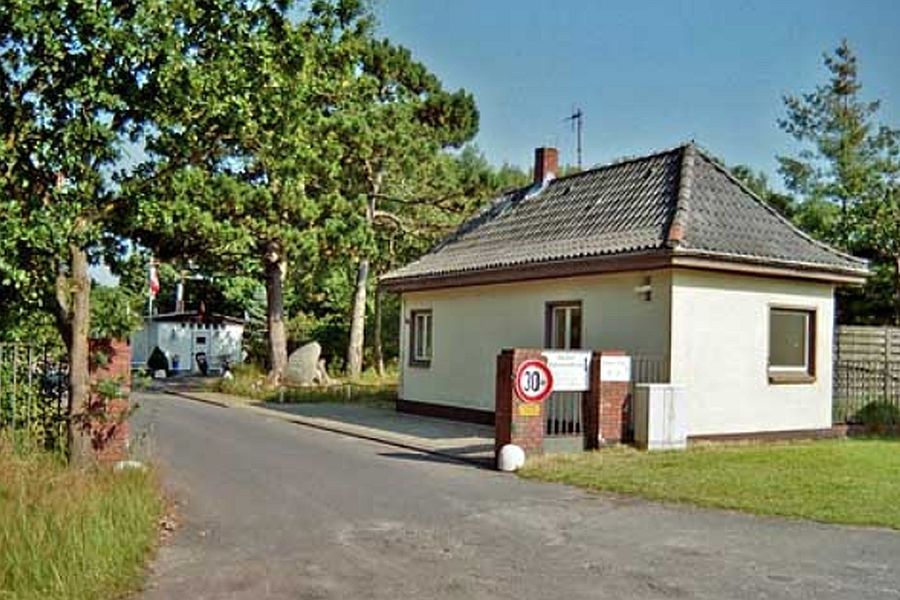
The former guard's house at the entrance to Fort Thomsen on Duhner Allee.
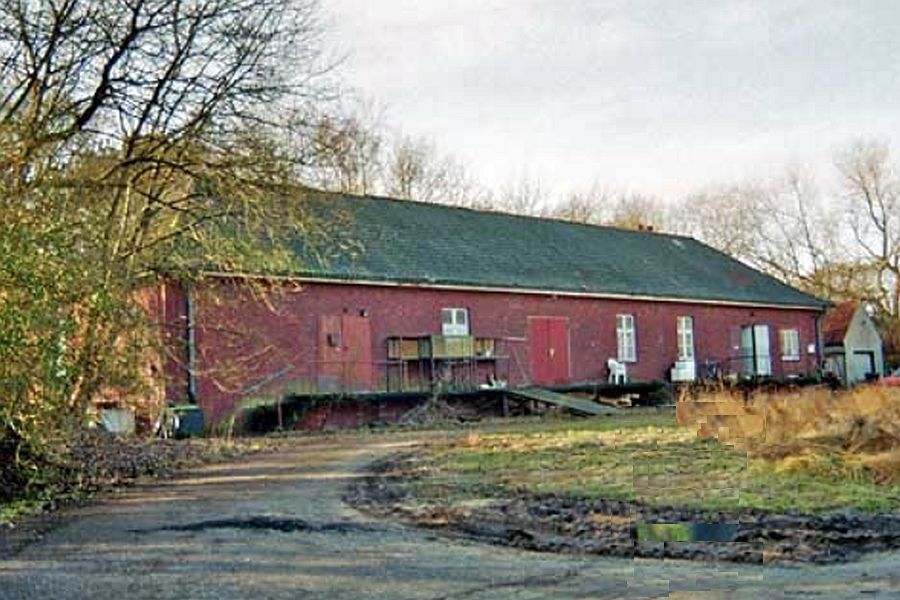
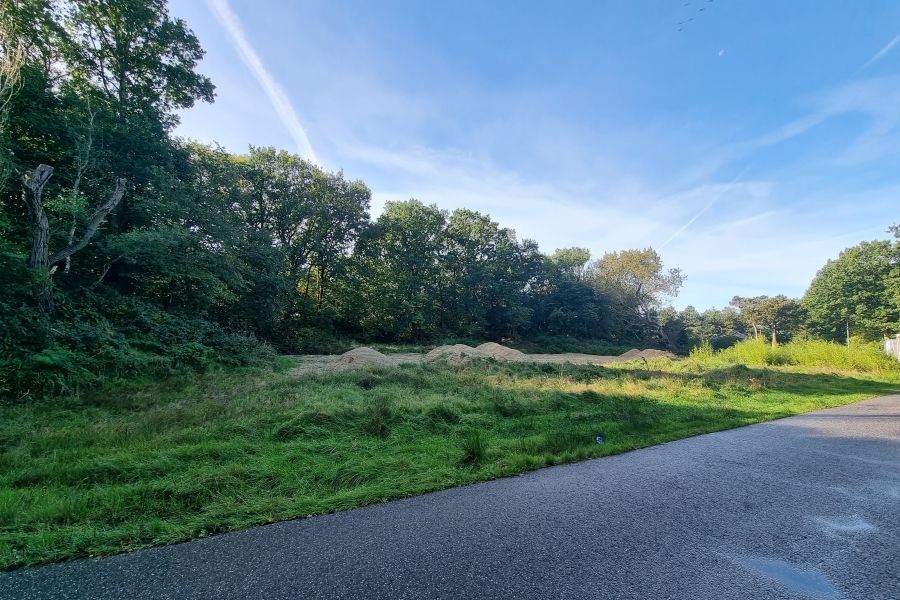
The former warehouse of the ammunition factory was built in the spring of 1929 as an artillery storage hall. It was demolished in 2022 to make room for the new building of the Duhnen - Stickenbüttel volunteer fire department.
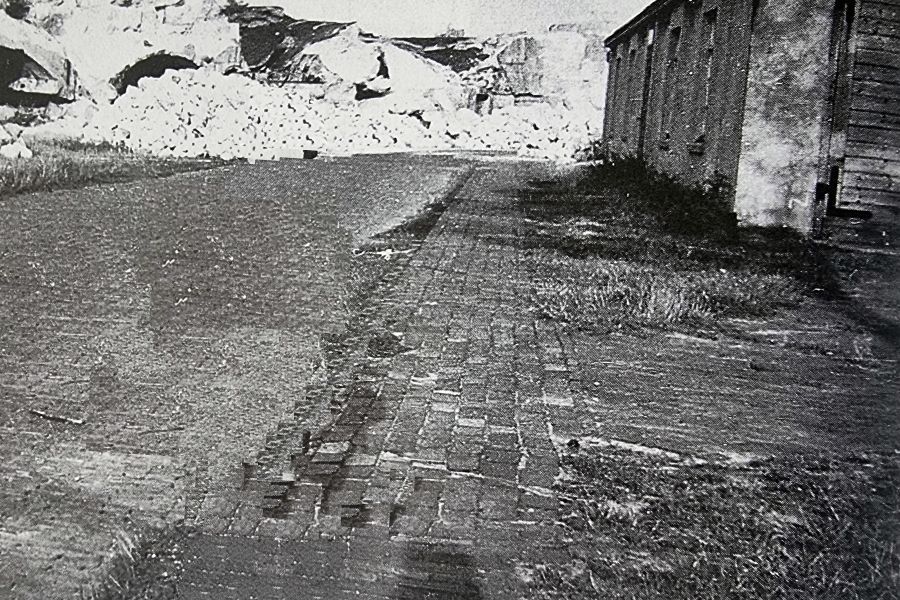
View of the blown-up remains of "Fort Thomsen" after 1946. View from the entrance of "Duhner Allee". Source: Private
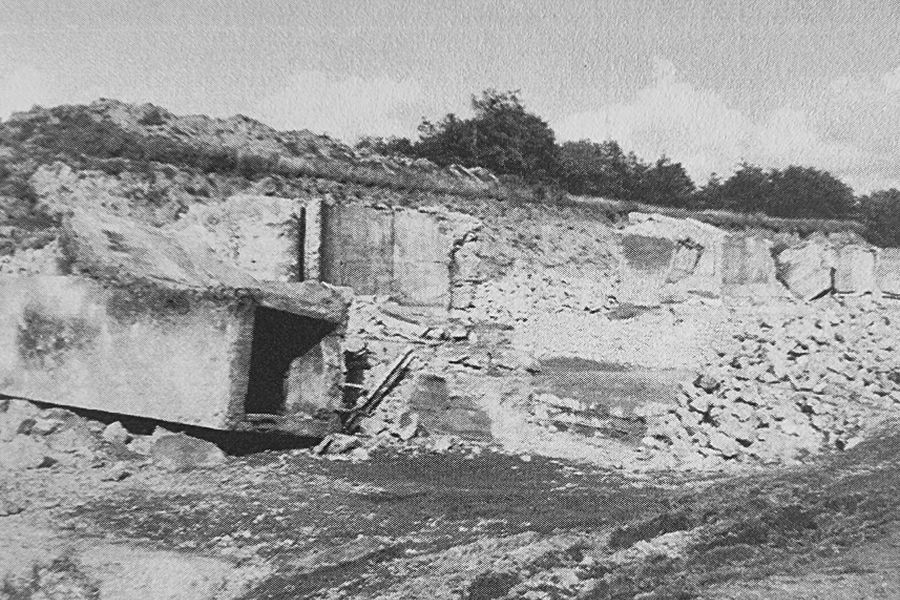
Große Mengen Schutt sind hier bereits abgefahren. Die komplette Beseitigung der Bunkeranlage dauerte allerdings bis Anfang der sechziger Jahre.
Quelle: Privat
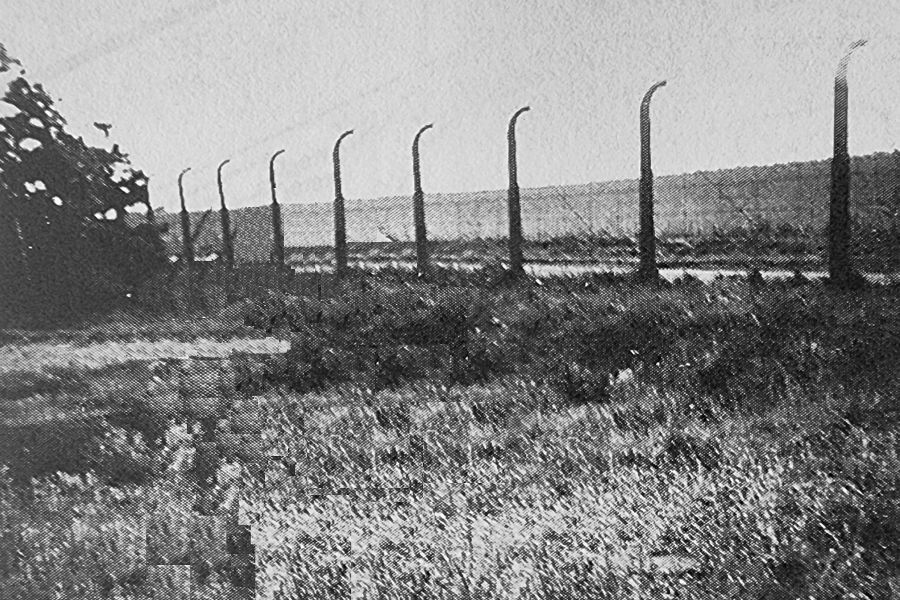
The security fence that ran around the entire area. Here in the background the "Vier Schneeden Weg".Source: Private
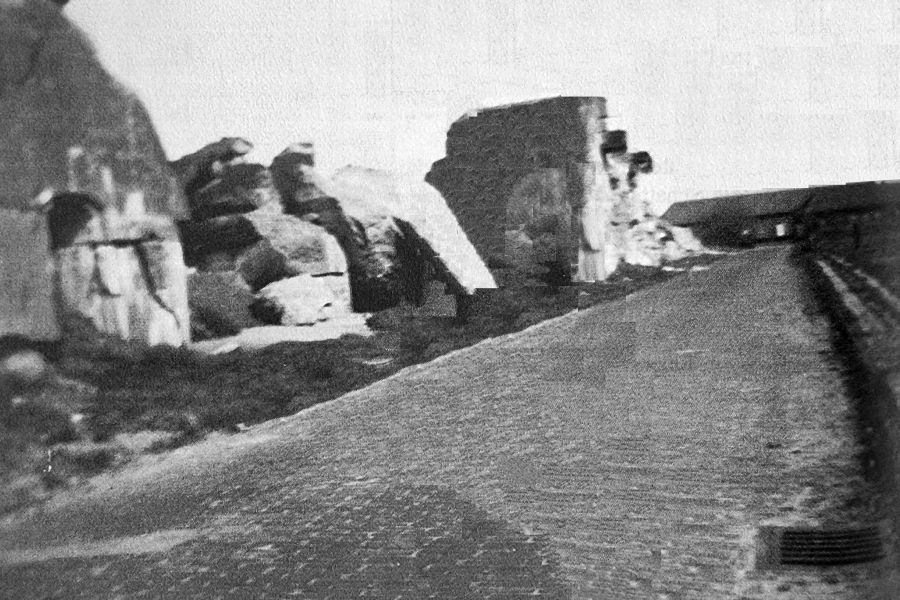
View from the west. In the background the still existing laboratory. On the left the blown-up remains of the old mortar battery. Source: Private
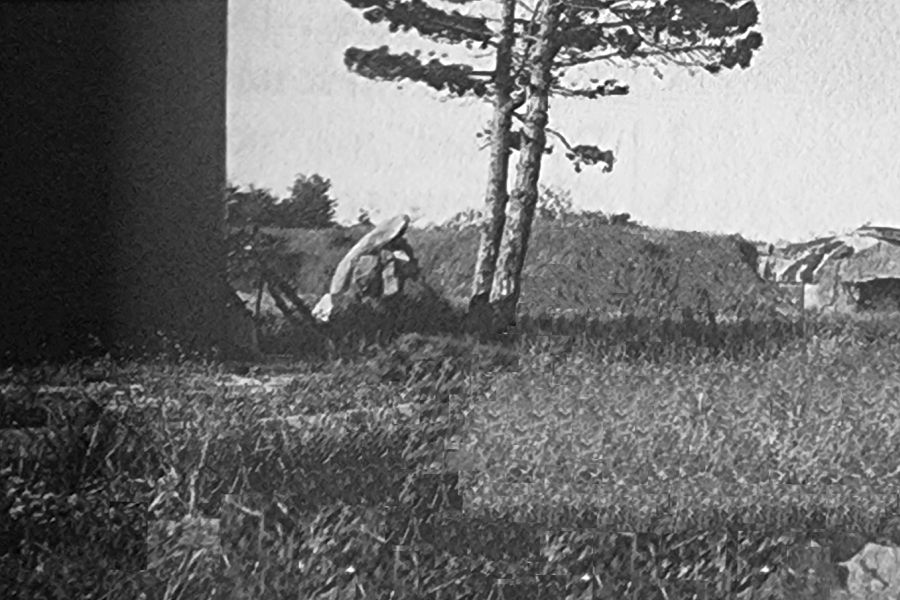
View from the back of the warehouse from the south, to the blown-up remains of the former fort.Source: Private
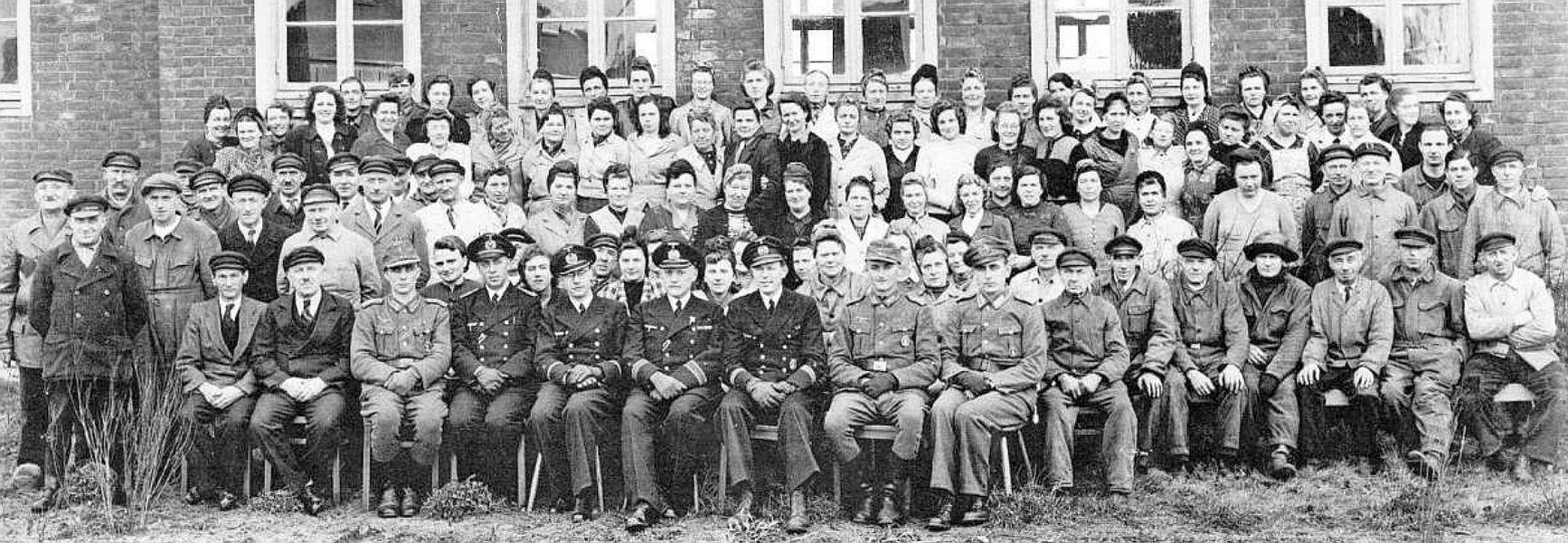
Soldaten und Belegschaft der Marine Munitionsanstalt des Fort Thomsen auf einem Gruppenbild
Quelle: Privat
Anti-aircraft protection of the ammunition depot "Fort Thomsen"
To defend against enemy low-flying aircraft, the area was surrounded by three raised towers for light anti-aircraft guns. One was at the level of the current entrance to "Vier Schneeden Weg", the second was on the south side of the site on what is now "Duhner Allee" and a third was east of the new hall on the "NHC" part of the site. The towers were built from reinforced concrete according to the Navy's "Plan booklet for the fixed installation of anti-aircraft weapons". It is not confirmed but it can be assumed that each one housed a 2 cm. Model 30 anti-aircraft gun. The towers were demolished and blown up by 1949 at the latest. There are no photos of these not entirely inconspicuous building structures to date.
Kindheit und Jugend waren in den Kriegsjahren keine Zeit der Freizeit. Alles hatte sich den Umständen anzupassen. Die damals 15 jährige "lnge Letto" berichtet, wie ihr Schulleben ungefragt zu Ende ging und sie unter anderem bis Kriegsende in der MUNA im "Fort Thomsen" eingesetzt wurde.
In den Sommerferien 1944 wurden alle Schüler der Handels- und Haushaltsschule verpflichtet, drei Wochen Kriegsdienst zu leisten. Entweder beim Bauern, in einer kinderreichen Familie oder in der Munitionsfabrik.
Unsere Klasse kam nach Groden, um im dortigen Minendepot zu arbeiten. Ich wohnte in Stickenbüttel und bewarb mich wegen des langen Weges nach Groden im Fort Thomsen, damals Munitionsfabrik. Um 7 Uhr dort melden. Ich wurde in einen Raum geführt, gefüllt mit Spinden. Bekam einen Spind zugeteilt, eine Feile in die Hand gedrückt und Sandpapier.
In Halle 5 melden. Ich stand da und wusste nicht, wie mir geschah. lch öffnete die schwere Tür und sah einen langen Tisch mit Granaten. Rundherum saßen ungefähr zwölf Frauen und putzten und schmirgelten Granaten. An den Wänden standen mehrere Munitionskisten. Ich wurde freundlich aufgenommen und eingewiesen, wie man rostige 2-cm- und 3,5-cm-Granaten wieder blank bekommt. Dabei wurde oft gesungen und gelacht. Auch zusammen geweint, wenn wieder eine der jungen Frauen die Nachricht bekommen hatte, ihr Mann sei für Volk und Vaterland gefallen.
Mittagessen gab es im Hauptgebäude und auch Luftschutzkeller, was kein angenehmes Gefühl war. Bei der Arbeit ging es um Materialerhaltung. Manchmal haben wir auch Zettel mit reingelegt: Schöne Grüße !
Ein paar Tage vor dem Ende des Krieges wurde Thomsen aufgelöst. Jeder konnte mitnehmen, was zu gebrauchen war. Ich lief nach Haus, um mit meinem Großvater und unserem Blockwagen Munitionskästen als Feuerung zu holen. In einer Kiste fanden wir noch Handgranaten. Wir wussten gar nicht, was wir damit anfangen sollten. Mein Opa hat sie dann in der Sandkuhle vergraben.
Source: Special issue of the Cuxhavener Nachrichten "World Wars in Cuxhaven" from 2014. Researched by Maren Reese-Winne.
Legacy

Extract from the risk assessment of legacy military waste in Lower Saxony and the preliminary final report from June 1997. Ultimately, there is still the suspicion of a certain remaining amount on the site, primarily in the area of the nature reserve and in the moat. Source: LBEG Lower Saxony


